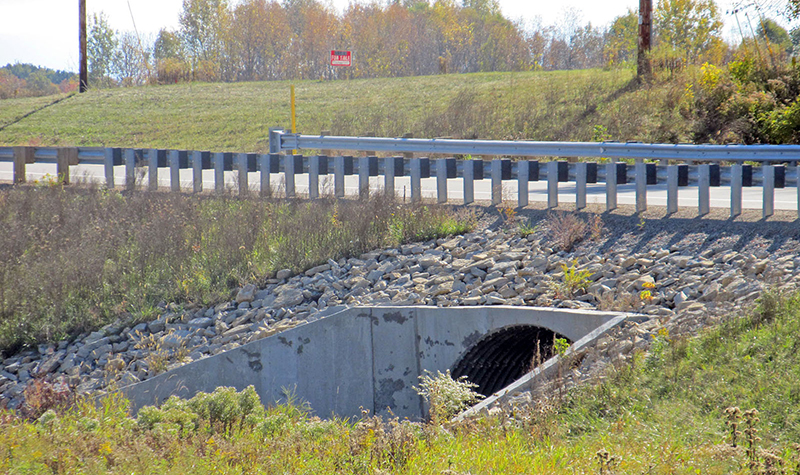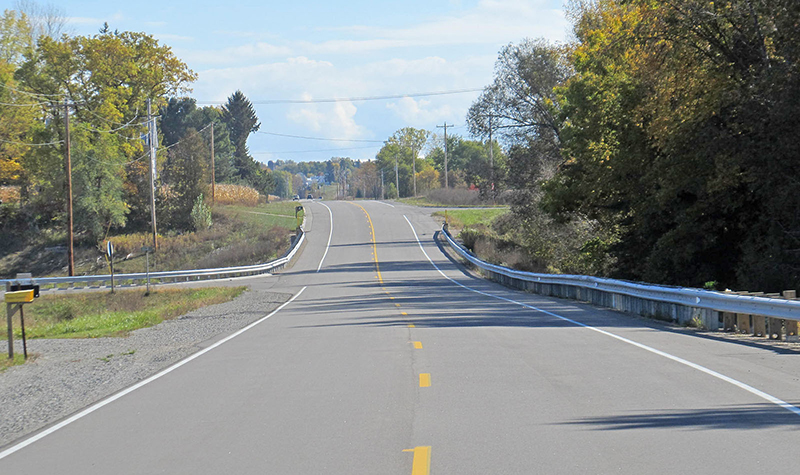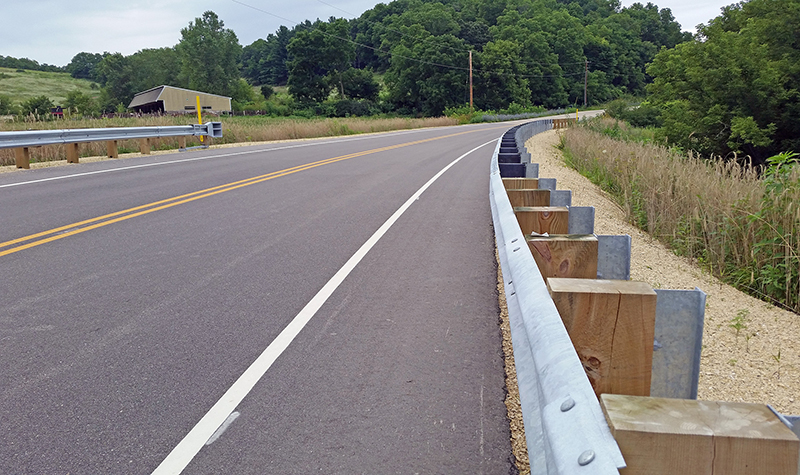On the Road Again: Guardrails Serve to Protect, Deflect
The No. 1 goal of every driver is to stay on the road. But sometimes, due to circumstances beyond our control (and some that are in our control), vehicles can go astray. Thanks to guardrails, many potentially tragic crashes instead result in just the inconvenience of a fender bender and insurance claims.

About the Expert:
Mark Petersen has been a transportation engineer with Ayres since 1999, working on urban and rural highways throughout Wisconsin. His primary responsibilities include project management, urban and rural state highway design, report preparation, utility coordination, and agency coordination.
According to the U.S. Department of Transportation/Federal Highway Administration, the purpose of a guardrail is “first and foremost, a safety barrier intended to shield a motorist who has left the roadway.”
If your vehicle for some reason unintentionally left the roadway at a high rate of speed, the best-case scenario is that you’d eventually come to a stop with minimal damage to yourself, other people, or property.
But sometimes that’s not an option: Roads are lined with obstacles and potential hazards, such as trees, ditches, bridge piers, utility poles, bodies of water, and other roads. A guardrail serves as a barrier and/or a deflector, and it’s up to transportation engineers to figure out when and where to place guardrails that may benefit the most drivers in the most conditions.
Why are guardrails needed?
Most people probably don’t give guardrails a second look, but in reality, every guardrail placement is carefully calculated according to many factors. Chief among them: Since guardrails effectively become another potential point of impact on a roadway, engineers must weigh whether hitting a guardrail would be less harmful than hitting the object or obstacle that lies beyond.
Typically, transportation engineers want to limit the amount of guardrail placed as much as possible. While guardrails may be added as a retrofit to existing roads, newer roads may be designed to minimize roadside obstacles – and that’s where engineering experts come in. Options could include aligning a road on a smoother curve or filling in a ditch or ravine, entirely eliminating the need for guardrails.
 But where guardrails are used, standards must be followed. The current standard is the Midwest Guardrail System (MGS). This relatively new standard (early 2000s) came about due to the need to accommodate larger, heavier vehicles. MGS guardrails are designed to be slightly higher (31 inches compared with the old 27¾-inch standard), so they’re high enough to contain most trucks but low enough to still contain smaller vehicles and motorcycles. They also use blockouts, and rail splices occur at mid-span compared with occurring at the posts. While MGS is the standard, it’s acceptable to use older versions to match existing if small repairs are required on a long section.
But where guardrails are used, standards must be followed. The current standard is the Midwest Guardrail System (MGS). This relatively new standard (early 2000s) came about due to the need to accommodate larger, heavier vehicles. MGS guardrails are designed to be slightly higher (31 inches compared with the old 27¾-inch standard), so they’re high enough to contain most trucks but low enough to still contain smaller vehicles and motorcycles. They also use blockouts, and rail splices occur at mid-span compared with occurring at the posts. While MGS is the standard, it’s acceptable to use older versions to match existing if small repairs are required on a long section.
Despite its name, MGS guardrails are not limited to use only in the Midwest. They are so named because they were researched, developed, and crash-tested at the Midwest Roadside Safety Facility on the campus of the University of Nebraska-Lincoln.
How do guardrails work?
Guardrails are meant to absorb the impact of a crash or deflect wayward vehicles, but it’s not as simple as placing a piece of metal along the road. Guardrails work as a system, which includes the guardrail itself, the posts, the soil in which the posts are driven, the connection of the guardrail to the posts, the end terminals, and the anchoring system at the end terminals. The two components that determine how well a guardrail will perform upon impact are the end terminal and the guardrail face.
Guardrail face: The face’s sole purpose is to redirect vehicles back onto the roadway should the need arise. The face extends along the roadway from one end terminal to another.
End terminal: Each end terminal must be treated to absorb or redirect energy upon impact. If hit head-on, an end terminal is designed to slide down the guardrail, flattening and redirecting it away from the vehicle until the vehicle eventually stops. If hit at an angle, the impact head may partially extrude the guardrail, essentially acting like a gate that opens to allow the vehicle to pass behind it.
Engineering expertise is needed
Engineers occasionally encounter unique situations during roadway reconstruction and rehabilitation. For example, if a guardrail length of need extends past a driveway or intersection, engineers must figure out a way to protect the structure or drop-off while still allowing for access. Typically, engineers would wrap the guardrail using a short radius section.
In other cases, slopes and alignments can be adjusted to avoid the use of guardrail altogether, thus saving the client upfront material costs along with long-term maintenance costs (not to mention potential expenses should they get hit and need to be repaired or replaced). Engineers can do cost estimates of options (e.g., guardrail vs. realignment), providing clients with all the information they need to assist in making design decisions.
 Transportation experts can also help navigate the standards set forth in the various roadside design manuals, ensuring that minimum requirements are met while providing options to help clients meet their construction and maintenance budgets.
Transportation experts can also help navigate the standards set forth in the various roadside design manuals, ensuring that minimum requirements are met while providing options to help clients meet their construction and maintenance budgets.
Need assistance with a transportation project? Ayres’ experts are ready to help. Contact Mark or any member of our transportation team.
Looking for a Chance to Define Your Career Path?
Our St. Paul office is looking for a bright-minded leader to create and manage a Transportation Engineering/Design group! Take advantage of this unique opportunity to grow a team of professionals while writing your own story within Ayres.

 By
By
Comments are closed.